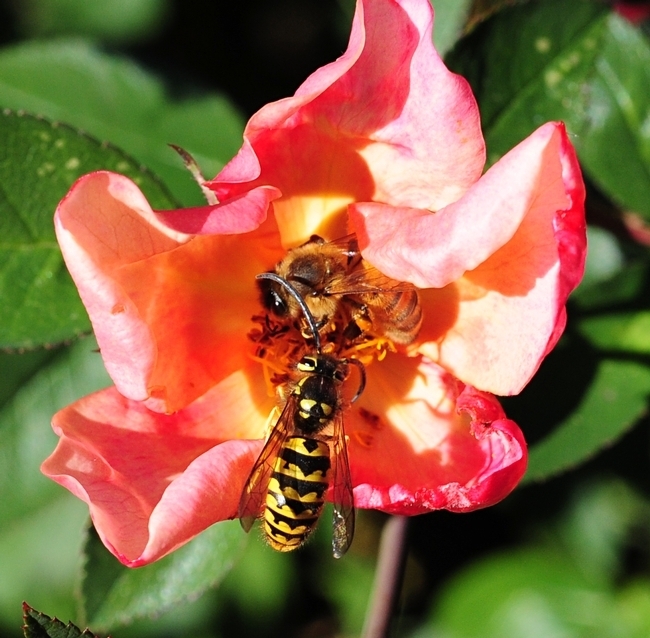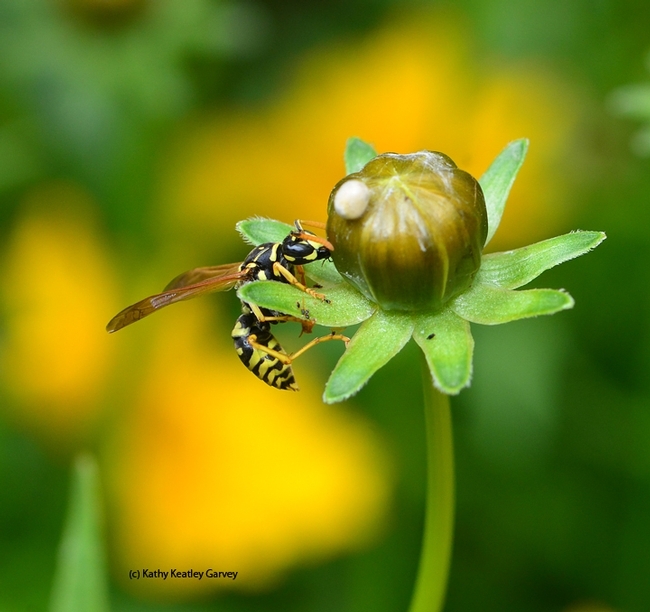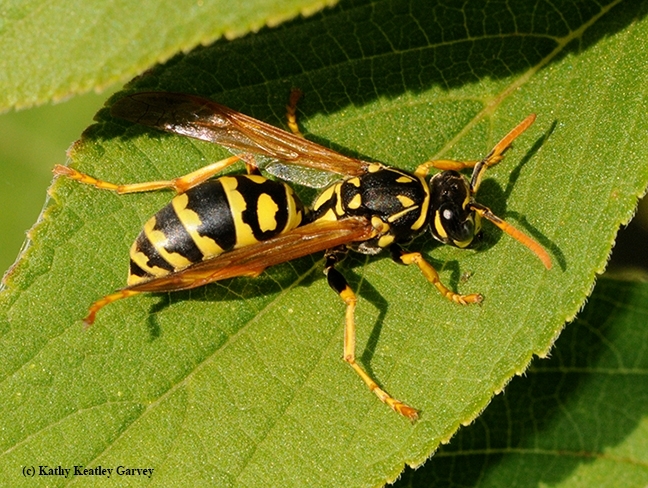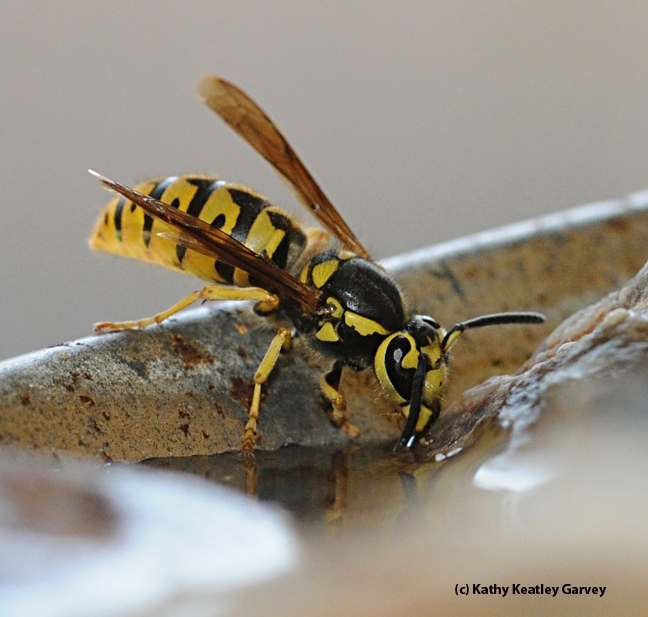
For one, they're pollinators. Two, they're great predators, contributing to the biocontrol of such lepidopteran pests as cabbageworms (larva of cabbage white butterflies). Three, they're quite intelligent. Four, they're superb architects.
And they are much more. (Professor Amy Toth of Iowa State University told a UC Davis Entomoloogy and Nematology seminar: "They have been shown to carry yeasts to winemaking grapes that may be important contributors to the fermentation process and wonderful flavors in wine!"
Enter the Bohart Museum of Entomology, which is hosting an open house on "Social Wasps" from 1 to 4 p.m., Saturday, Jan. 20 in Room 1124 of the Academic Surge Building, 455 Crocker Lane, UC Davis campus. Attendees can chat one-on-one with wasp expert UC Davis distinguished professor Lynn Kimsey, director of the Bohart Museum. They can check out the wasp specimens; the Bohart houses some 50,000 vespid specimens in its eight-million insect specimen collection.
The open house is free and family friendly. Parking is also free.
Kimsey estimates that 2000 described species inhabit our world, and about 500 more are undescribed. The most headline-grabbing wasp? That would be the northern giant wasp, Vespa mandarinia, formerly known as the Asian giant wasp. The news media dubbed it "the murder hornet."
Many folks confuse the Western yellowjacket and the European paper wasp. An easy way to identify them is by the color of their antennae. Yellowjacket antennae are black, like the Las Vegas Raiders' logo, and European paper wasp antennae are orange, like the logo of the San Francisco Giants.
Kimsey details information on her fact sheets on yellowjackets and paper wasps. For example:
Yellowjackets. They build large, hidden nests, often in rodent burrows or in cavities of trees, walls or attics. Their nests can be huge with 50,000 to 100,00 workers. They feed on live prey. But the pest species, such as the Western yellowjacket, Vespula pensylvanica, "will scavenge other sources of meat and sugar, including sodas , hamburgers, and road kill." They are often called "meat bees."
Paper Wasps. They build open-faced nests, with the cells exposed. "Nests are built out of fibers the wasps collect from plants and mix with saliva. They are commonly located under eaves an in other protected sites. Even large nests rarely have more than 30 workers and one queen. These are all annual nests. They are founded in the spring and die in the fall. Paper wasps feed only on live insects, such as caterpillars and bugs. They do not scavenge in garbage or at picnics, like some of the yellowjacket species will do." Common in Northern California is the European paper wasp, Polistes dominula.
Kimsey is a recognized authority on insect biodiversity,systematicsandbiogeography of parasitic wasps, urban entomology, civil forensic entomology, and arthropod-related industrial hygiene. Among her many honors: she served as president of the International Society of Hymenopterists from 2002-2004. In 2020 she won the C. W. Woodworth Award, the highest honor bestowed by the the Pacific Branch, Entomological Society of America (PBESA).
Kimsey plans to retire in 2024 but will continue her research and public service at the Bohart Museum.
The Bohart Museum not only houses a global collection of insect speciments, but a live "petting zoo" (Madagascar hissing cockroaches, stick insects, tarantulas and more), and an insect-themed gift shop. For more information, contact the Bohart Museum at bmuseum@ucdavis.edu or access the website at https://bohart.ucdavis.edu
Further Reading:
Wasps, The Astronishing Diversity of a Misunderstood Insect, a 256-book by Eric Eaton, published in 2021 by Princeton University. The pub;isher reports: "Wasps are far more diverse than the familiar yellowjackets and hornets that harass picnickers and build nests under the eaves of our homes. These amazing, mostly solitary creatures thrive in nearly every habitat on Earth, and their influence on our lives is overwhelmingly beneficial. Wasps are agents of pest control in agriculture and gardens. They are subjects of study in medicine, engineering, and other important fields. Wasps pollinate flowers, engage in symbiotic relationships with other organisms, and create architectural masterpieces in the form of their nests. This richly illustrated book introduces you to some of the most spectacular members of the wasp realm, colorful in both appearance and lifestyle. From minute fairyflies to gargantuan tarantula hawks, wasps exploit almost every niche on the planet. So successful are they at survival that other organisms emulate their appearance and behavior. The sting is the least reason to respect wasps and, as you will see, no reason to loathe them, either. Written by a leading authority on these remarkable insects, Wasps reveals a world of staggering variety and endless fascination."
Attached Images:

A honey bee and a Western yellowjacket meet on a rose at a UC Davis bee garden. Both are pollinators. (Photo by Kathy Keatley Garvey)

A foraging European paper wasp, Polistes dominula. (Photo by Kathy Keatley Garvey)

The antennae of the European paper wasp are orange. (Photo by Kathy Keatley Garvey)

The antennae of the Western yellowjacket, Vespula pensylvanica, are black. (Photo by Kathy Keatley Garvey)